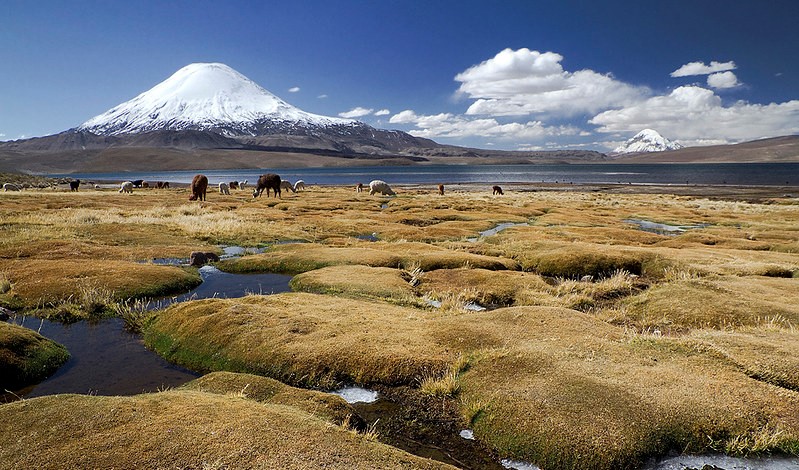Flora
Throughout Qhapaq Ñan there are various types of endemic and non-endemic species, among which we can highlight candelabra cactus, yareta and
quenoa. Almost all of these plants get water from morning dew. Destruction and extraction of these is forbidden.
QUEÑUA
THE SACRED TREE



BOFEDAL (4000 m.a.s.l)
They are high altitude wetlands, located 4000 m.a.s.l. Inside these wetlands there are streams of water. For mating season, seasonal species coming from the north visit these places in search of food and water. Camelids eat mainly grass that grows from these wetlands.
YARETA Azorella compacta Phil (4000 to 4800 m.a.s.l)
It is a perennial tussock herb that appears in high plateau, usually in slopes and stony grounds. In Chile it can be found from the region of Arica y Tarapaca to the Antofagasta region. It has a compact and woody structure and it is used to make tea, perfuming smoke and medicine. This species is in risk of extinction.








CANDELABRO CACTUS. Browningia candelaris (2000 to 3000 m.a.s.l)
It is a cactus that appears in mountainous places, usually in rocky soil. It can grow from 3 to 5 m in height, and it can grow up to 50 branches and a type of berry. In Chile, it can be found from the region of Arica y Parinacota to the Tarapaca region. Its wood is used for construction and handicraft. This species is in risk of extinction


